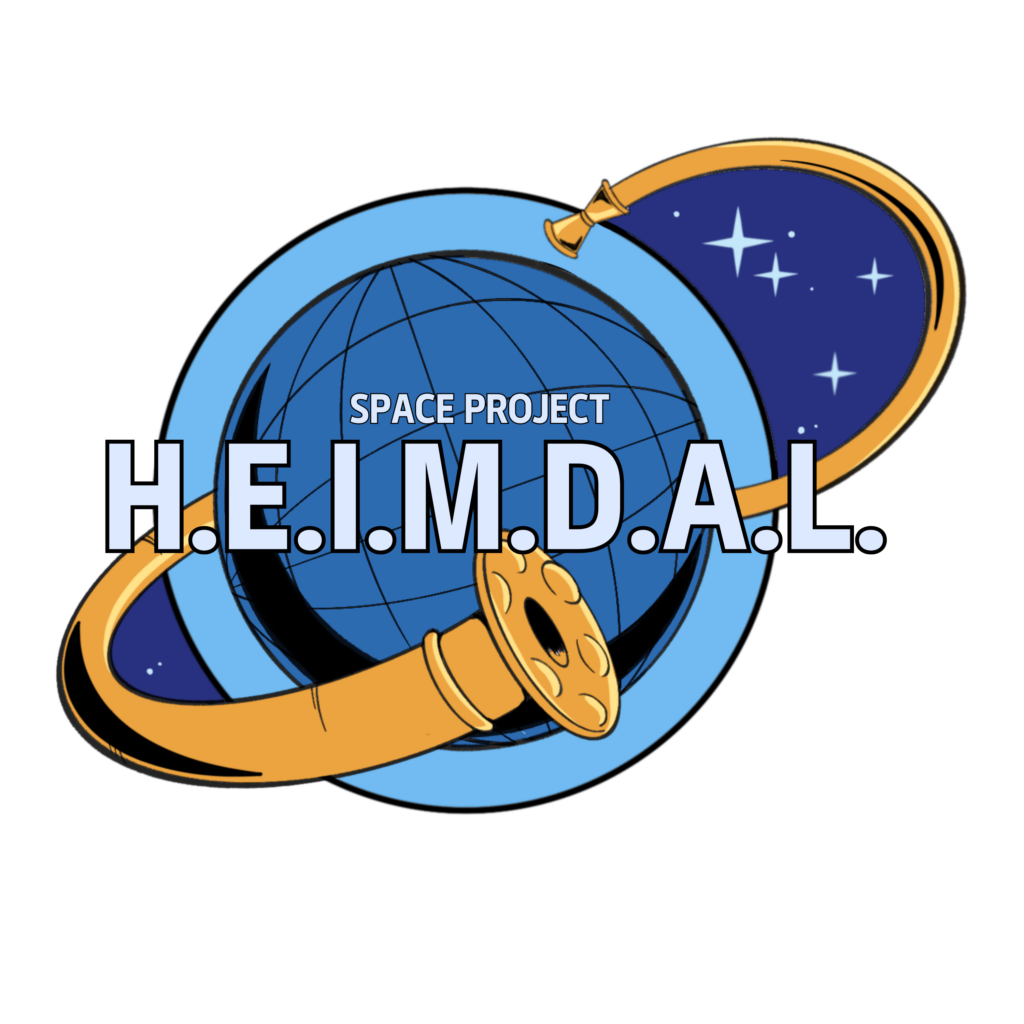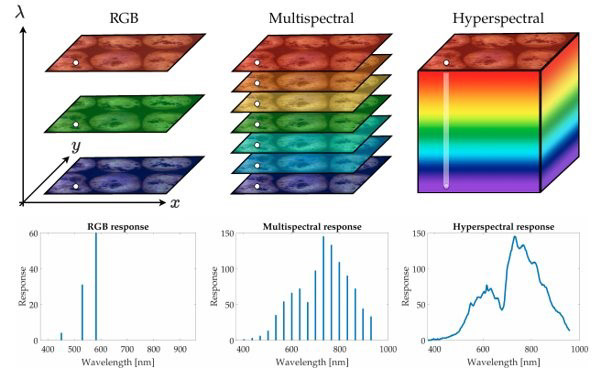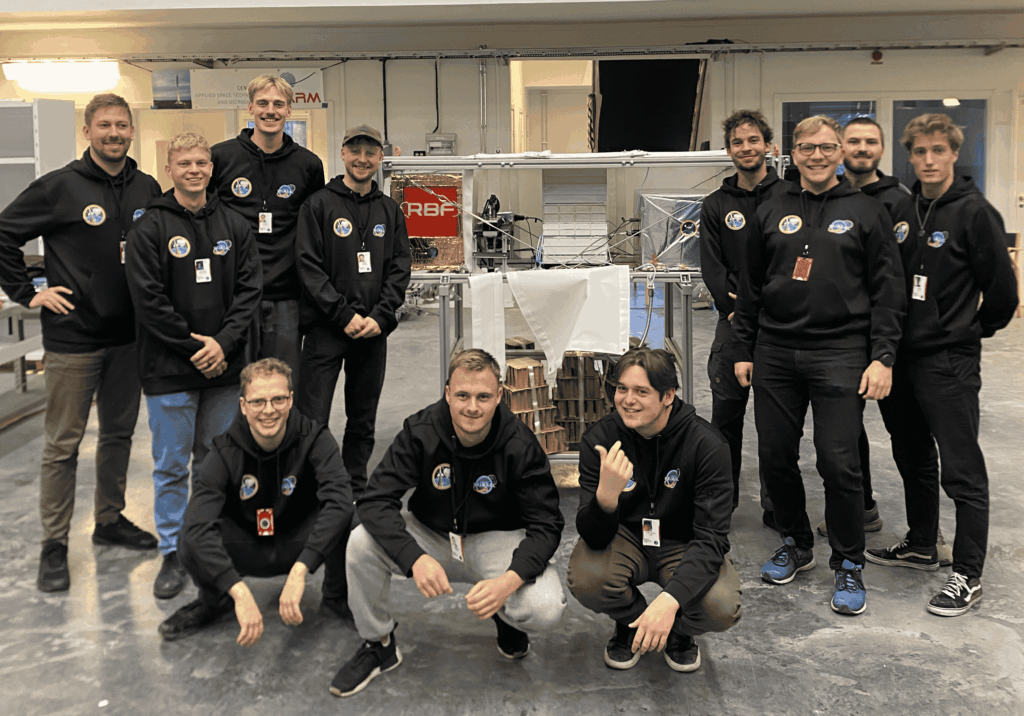HEIMDAL

H.E.I.M.D.A.L is a space project made in collaboration between students from both Aarhus University and University of Southern Denmark. It is an acronym for “Hyperspectral Environmental Imagery Measurements Differentiating between Areas of Localized specimens”. The experiment will be launched as part of the REXUS/BEXUS programme.
(for more information check out www.rexusbexus.net)
Hyperspectral imaging (HSI) is an imaging technique that for each pixel measures not only the main 3 colors, but a wide. This leads to each pixel having a color spectrum. The experiment is a proof of concept that it is possible to use hyper spectral imaging to identify biomass and land cover by looking at the color specters and comparing them to known color signatures.

Mission concept
The scientific objectives of the mission are:
1. Land cover classification
2. Cloud-snow discrimination
3. Biomass classification + wetlands determination
Future possibilities
Our vision is not that H.E.I.M.D.A.L. will be a standalone project, but also be part of flight proving the camera for a CubeSat satellite mission. This mission will be part of the DanIsh Student Cubesat programme DISCO.
The balloon and the experiment
The experiment will take place in October 2024 and be launched as part of the 15th BEXUS cycle. The balloon will fly for about 1-5 hours at a height of 25-33 km over northern Sweden.
The team
Our team consists of the following 11 students:
– Tobias Jørgensen (Team Lead)
– Albertino Bach (Mechanical)
– Søren Jørgensen (Mechanical)
– Mads Juul AHlebæk (Scientist)
– Christian Hald Jessen (Scientist)
– Laurits Tværmose (Scientist)
– Jes Enok Steinmüller (Scientist, outreach)
– Christian Cordes (Software)
– Jonas Jakobsen (Software)
– Boas (Software)
– Loui Collin – Enoch (Electronics)
– Viktor Kanstrup (Electronics)

The team and experiment at launch
The Teams
The team is split into 5 subteams, that are each focusing on specific tasks of the project. The teams both work together and independently depebding on the overlaps of the tasks.
Scientists:
The focus of this group is data acquisition and processing. This includes collecting spectra from different plants to be identified during the biomass classification as well as developing the machine learning algorithm that will be used to deconstruct and analyze the acquired data.
Mechanical:
The focus of this group is the mechanical part of the experiment. This includes the mounting of the camera and the physical and practical design of the setup. This further includes finding solutions to problems regarding issues such heat dispersion, the cold and possible shocks.
Electrical:
This group focuses on the electrical components and requirements of the experiment and finding solutions to any complications related to the power supply and requirements of the camera as well as the physical wiring to any other components.
Software:
This group focuses on the software side of the experiment which includes everything from data collection and transfer, to backup and efficient use of available downlink. The work also includes delving into the programming of the camera and making sure that every part is compatible.
Outreach:
This group focuses on spreading awereness about the project
Project updates and news
(2023-12-13) – H.E.I.M.D.A.L was accepted for the 15th BEXUS cycle
We at HEIMDAL are incredibly happy and excited to announce that we have been selected by the BEXUS selection panel to be part of the launch of the 15th cycle. This means that we have been greenlit and will during october 2024 take part in the launch of the BEXUS balloon and conduct our experiment.
This is a monumental step for our project and will be the beginning of a great process and possible future experiments and missions that we believe will help develop new methods to protect our world.
During the selection workshop in Leiden, Netherlands we had the chance to meet a lot of experts in the field of space projects and we got a lot of insightful comments and recommendations that will help our development
The next step we are preparing for is the training workshop in Kiruna, Sweden where we will show our PDR (Preliminary Design Review ) and further prepare and polish the experiment for the launch.
We are looking forward to the rest of this process with excitement, ambition and high expectations.

